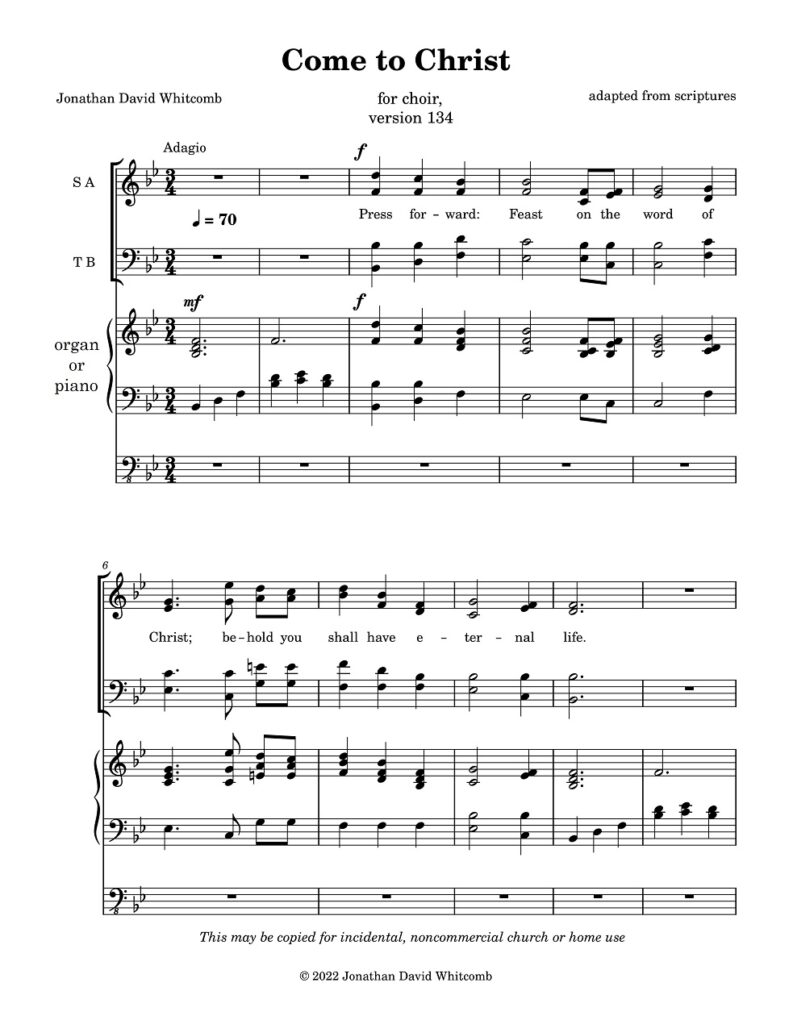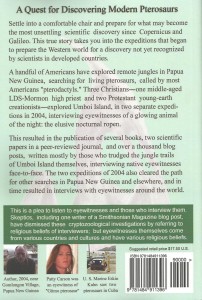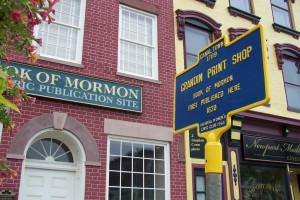While creating web pages of images of a 1970 family history booklet (compiled by my father’s aunt) titled The Spaulding Heritage, I came across the following, which requires my response:
Solomon [Spaulding], an attorney and clergyman, and graduate of dartmouth, wrote a fiction account, “Manuscript Found.” This was generally regarded as the basis for the Mormon Bible.
I myself was baptized, in 1971, from the spiritual experience of sincerely reading and pondering the Book of Mormon. I know that this book is of divine origin, with the characters named being real persons who lived anciently; I know it by the power of the Holy Spirit, not by human reasoning.
I have become closer to my Savior Jesus Christ by applying the principles taught in the Book of Mormon. As my wife and I raised our three daughters, our family relationships were better when we were more diligent in reading this book together as a family. We had more peace in our family when we read that book together.
I quote from a special chapter of Third Nephi, chapter eleven:
8 And it came to pass, as they understood they cast their eyes up again towards heaven; and behold, they saw a Man descending out of heaven; and he was clothed in a white robe; and he came down and stood in the midst of them; and the eyes of the whole multitude were turned upon him, and they durst not open their mouths, even one to another, and wist not what it meant, for they thought it was an angel that had appeared unto them.
9 And it came to pass that he stretched forth his hand and spake unto the people, saying:
10 Behold, I am Jesus Christ, whom the prophets testified shall come into the world.
11 And behold, I am the light and the life of the world; and I have drunk out of that bitter cup which the Father hath given me, and have glorified the Father in taking upon me the sins of the world, in the which I have suffered the will of the Father in all things from the beginning.
12 And it came to pass that when Jesus had spoken these words the whole multitude fell to the earth; for they remembered that it had been prophesied among them that Christ should show himself unto them after his ascension into heaven.
Now to human reasoning about another explanation for the origin of the Book of Mormon:
Manuscript Found
What is the most reasonable explanation for “Manuscript Found?” It most likely never existed. It was probably confused with Solomon Spalding’s Manuscript Story, which was rediscovered in 1884, and is a fictional story about some Romans who, while sailing to England early in the fourth century A.D., were blown off course, landing on the eastern coast of North America. Manuscript Story bears no resemblance to the Book of Mormon in any sense that would suggest that the former inspired the latter.
“Manuscript Found,” on the other hand, has never been found, throwing severe doubt on the idea that it ever existed, for those who supported it as an explanation for the origin of the Book of Mormon would have been vindicated by publishing it.
Old accounts of “Manuscript Found,” suggesting its contents resembled the contents of the Book of Mormon, now seem to have come from faulty memories. Declarations about contents including the Lost Tribes coming to America, for example, were at one time thought by some to be evidence of a connection between “Manuscript Found” and the Book of Mormon. But the Book of Mormon says nothing about the whereabouts of the Lost Tribes. That subject was just one of the items of talk among early 19th-century Americans who had heard about the Book of Mormon but who had not read it. Some persons assumed that the “Golden Bible” of Joseph Smith was about the Ten Lost Tribes traveling to the American continent; it is not.
In addition, some persons in early 19th-century America heard about the idea that the early Book of Mormon people had originally arrived at the “Isthmus of Darien.” This idea was mentioned by the Mormon missionary Orson Pratt, while he preached, defending the Book of Mormon, in areas that included, between 1832 and 1833, various parts of northwestern Pennsylvania. Some people began to believe that Pratt’s mentioning Darien came from some specific reference in the book; but that word is not found in the Book of Mormon.
On that subject, a John Miller, in an 1833 statement meant to support Spalding’s writings as being the original ideas behind the Book of Mormon, used the word “Darien” as if it supported the idea that Spalding had written another novel besides Manuscript Story. But the origin of that “Darien” idea surely came from Pratt’s widespread teachings, not from a Spalding novel that was purported to be on the same subject as Manuscript Story but which has never been found to have ever existed (“Manuscript Found”).
I am sorry for the complexity of this subject. Read the Book of Mormon itself and see for yourself the truthfulness of its teachings of the Gospel of Jesus Christ. “Manuscript Found” has never been found, probably because that manuscript never existed.
 .
.
